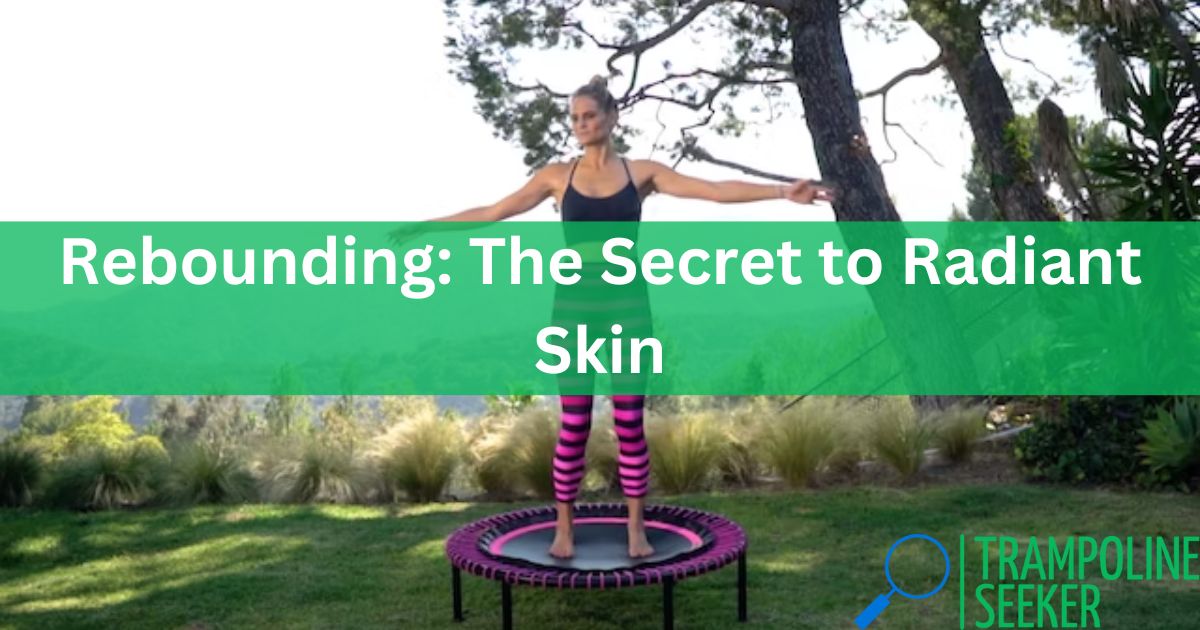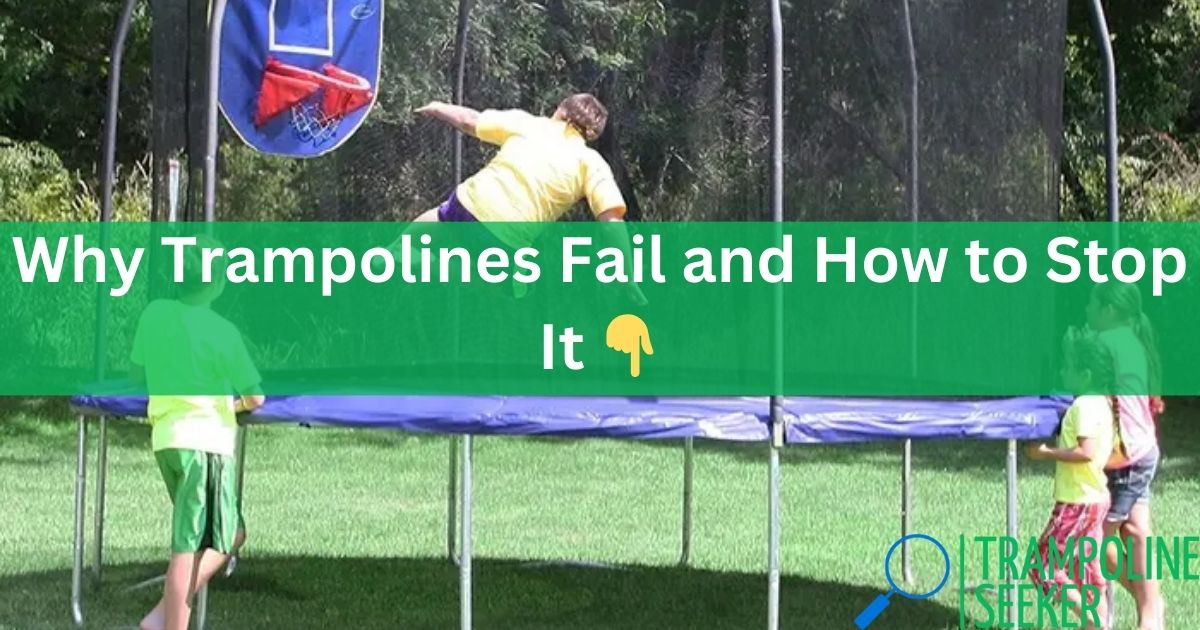Rebounding or Trampolining, has become an increasingly popular full-body workout over the past few years. With the cardio, muscle toning and low-impact benefits of jumping on a rebounder, it makes sense that many people are hanging up their walking shoes and hopping on a rebounder instead. But is rebounding exercise really better than walking? Can it actually help you burn more calories in less time?
In my personal exploration of rebounding versus walking, I’ve found that while both offer health advantages, trampolining tends to provide a more efficient calorie-burn in less time. However, factors like fitness level, workout duration, intensity and more also impact calories burned. Ultimately, the best form of exercise is one you enjoy and will stick to consistently.
If you’re debating between trampolining/rebounding or walking for exercise yourself, let’s take a deeper look at the comparisons. Here’s what you need to know about the calorie burn, benefits and downsides of an indoor rebounder workout versus a solid walk.
An Overview of Rebounding and Walking Benefits
The Benefits of Rebounding
Using a rebounder, offers a long list of health and fitness benefits that have made it an increasingly popular piece of home workout equipment:
Full-Body Workout
Jumping on a rebounder engages all of the major muscle groups at once – far more than simply walking. As you exert force with each bounce, you’ll tone your legs, core, back, arms and more. Rebounder turn a classic cardio workout into a full-body exercise routine.
Fun and Engaging
While a walk around your neighborhood can certainly be enjoyable, it may not capture your attention nearly as much as bouncing on a rebounder. The dynamic nature of jumping and moving on a bouncy surface keeps things lively and entertaining. This can motivate you to stick to trampolining long-term.
Increased Calorie Burn
Studies show that trampolining may burn up to 25% more calories per minute than moderate walking. For example, research found a 155-pound person burned roughly 260 calories in 30 minutes of rebounder exercise, whereas 30 minutes of brisk walking burned approximately 206 calories.
However, higher intensity interval-training style rebounder workouts can burn even more fat and calories. This suggests that how long, hard and effectively you jump determines calorie expenditure.
Low Impact
A mini rebounder mat absorbs impact, sparing stress on joints much more than pounding the pavement or a treadmill. This also lowers injury risk. For those with joint, back or other health issues impacted by higher impact activity, rebounding provides a safer exercise alternative.
Convenience
After an initial small investment in the rebounder equipment itself, you can bounce your way to fitness from the comfort and convenience of home – no gym membership required. This removes obstacles like driving to a fitness center and expands opportunities for exercise.
The Downsides of Rebounding
While clearly advantageous in many aspects, rebounders do come with some potential downsides including:
Higher Cost
You’ll need to factor in the cost of purchasing a rebounder if you don’t already own one. Prices range widely, but generally expect to invest $100 to $500+ for a quality home rebounder suitable for exercise.
Space Limitations
Rebounders do require physical space on your property – likely in a backyard, basement, garage or designated workout room. If space constraints are an issue, this can impede use.
Injury Risk
Without proper precautions, rebounder exercise does incur some risk of sprains, falls or other injuries. Using covered springs, padding and practicing caution when fatigued or attempting new moves is crucial. Always start any workout gradually as well.
The Benefits of Walking
Walking remains one of the most universally-recommended forms of physical activity for all ages and fitness levels. Here’s an overview of some of the many perks of making walking part of your regular exercise routine:
Accessibility
You can walk just about anywhere outdoors or on a treadmill with no special skills or equipment required. This versatility supports lifelong walking habits.
Low Impact
Like trampolining, walking allows you to raise your heart rate without the high-impact stress to joints and connective tissues that occurs from running. It avoids pain often associated with higher intensity cardio exercises.
Supports Weight Loss
At a brisk pace, walking burns a significant amount of calories and body fat. The CDC reports that 30 minutes of brisk walking five days weekly can aid substantial weight loss over time – especially when coupled with a healthy diet.
Mood Benefits
Research shows that walking releases feel-good endorphins while lowering levels of cortisol – the stress hormone. This makes walking an accessible way to boost mood, relieve anxiety and reduce tension.
The Downsides of Walking
However, walking is not without a few potential disadvantages:
Weather Dependence
If walking outdoors, you become much more impacted by weather conditions like extreme heat, cold, rain or snow. This can frequently interrupt planned walking workouts.
Lower Calorie Burn
While a consistent walking routine pays off for weight loss over time, you do burn fewer calories per minute during walking compared to higher intensity exercises like running or trampolining. For some, this slower pace makes it more challenging to stay motivated.
Less Muscle Toning
Walking engages your lower body but does little to actively tone your upper body and core. Additionally, it generally does not elevate your heart rate enough to optimize cardio endurance.
Rebounding vs. Walking: Key Comparison Points
Now that we’ve covered both the pros and cons of trampolining versus walking for exercise, let’s directly compare them across some key factors:
Calorie Burn
Winner: Trampolining/Rebounding
Study findings give trampolining a slight edge for fat and calorie burn potential per minute. However, extending walking duration can help balance this.
Muscle and Cardio Benefits
Winner: Trampolining/Rebounding
The dynamic, all-over body engagement of rebounder exercise elicits more well-rounded fitness improvements.
Joint Impact
Winner: Tie
Both trampolining and walking are low-impact activities that go easy on your joints compared to higher intensity cardio options.
Accessibility & Convenience
Winner: Walking
For most people, walking requires no equipment and can be done anytime, anywhere – giving it the edge for accessibility.
Fun Factor
Winner: Trampolining/Rebounding
Bouncing brings out your inner child! For sustainable motivation, rebounders provide a level of enjoyment and engagement that walking may lack.
So ultimately, while trampolining carries some advantages, the overall “winner” still comes down to your personal fitness objectives and preferences.
Getting the Most Out of rebounder and Walking Workouts
If you choose to make trampolining part of your exercise regimen, optimize safety and calorie burn with these tips:
- Warm up muscles thoroughly before bouncing
- Start slowly and build rebounder workout duration gradually
- Add variety with different jumps like tucks, kicks and jumps
- Maintain proper form – land with soft bent knees, don’t bounce too high
To maximize calorie expenditure and fitness gains from walking, aim for:
- Walking at a brisk enough pace to elevate heart rate
- Incorporating intervals – vary speed walking with slower recovery intervals
- Adding an incline on treadmills or hiking trails
- Holding weights to turn walks into strength training
The Bottom Line
For an efficient path to improving cardiovascular endurance, building muscle and torching calories, rebounder training holds some compelling benefits. However, for lifelong weight loss support, mood boosting and accessibility, walking remains a top contender – hence the reason it’s so often suggested by doctors and health organizations.
In the end, any physical activity you enjoy enough to do regularly delivers real payoffs. But by understanding the pros, cons and ideal utilization of rebounders compared to walking, you can make the most educated choice for your needs and fitness objectives. Personally, I find both rebounder workouts and regular neighborhood walks to be integral parts of my balanced exercise routine.
Related Articles:
- Trampoline Vs Ninja Course
- Trampoline vs Stepper
- Trampoline Vs Elliptical
- Trampoline Vs Pool
- Trampoline vs Running
Frequently Asked Questions
Is trampolining or walking better for people with knee/joint problems?
For those with knee, hip or ankle conditions negatively impacted by high-impact activity, a mini rebounder can provide a safer alternative to walking. The bounce of the mat absorbs force rather than directly transmitting impact to joints. However, this should always be discussed with your doctor first if you have existing joint injuries.
How many calories does 30 minutes of trampolining burn?
According to cited research, a 155-pound person can expect to burn approximately 260 calories during a 30-minute rebounding session at moderate intensity. Upwards of 400 calories may be torched during a higher intensity interval rebounder workout.
Can you lose weight by walking 30 minutes everyday?
Yes, going for daily 30-minute brisk walks supports gradual fat loss and weight loss over time. The CDC indicates 30 minutes of moderate walking 5 days weekly, paired with a sensible diet, can lead to significant long-term weight reduction. Up to 1 pound per week may be lost.
What muscles does a rebounder workout target?
Rebounder jumping utilizes muscles throughout your body including glutes, quads, hamstrings, hip flexors, core, back, shoulders, arms and more. It allows you to simultaneously build strength and stamina.
Is rebounding better than running?
Rebounding provides the cardiovascular intensity of running with less joint-jarring impact. Additionally, while running primarily engages the legs, trampolining works your upper and lower body for more complete conditioning. For those who find running outdoors challenging due to weather or treadmill running boring, rebounders can provide a fun alternative too.
Articles You May Like to Read:













